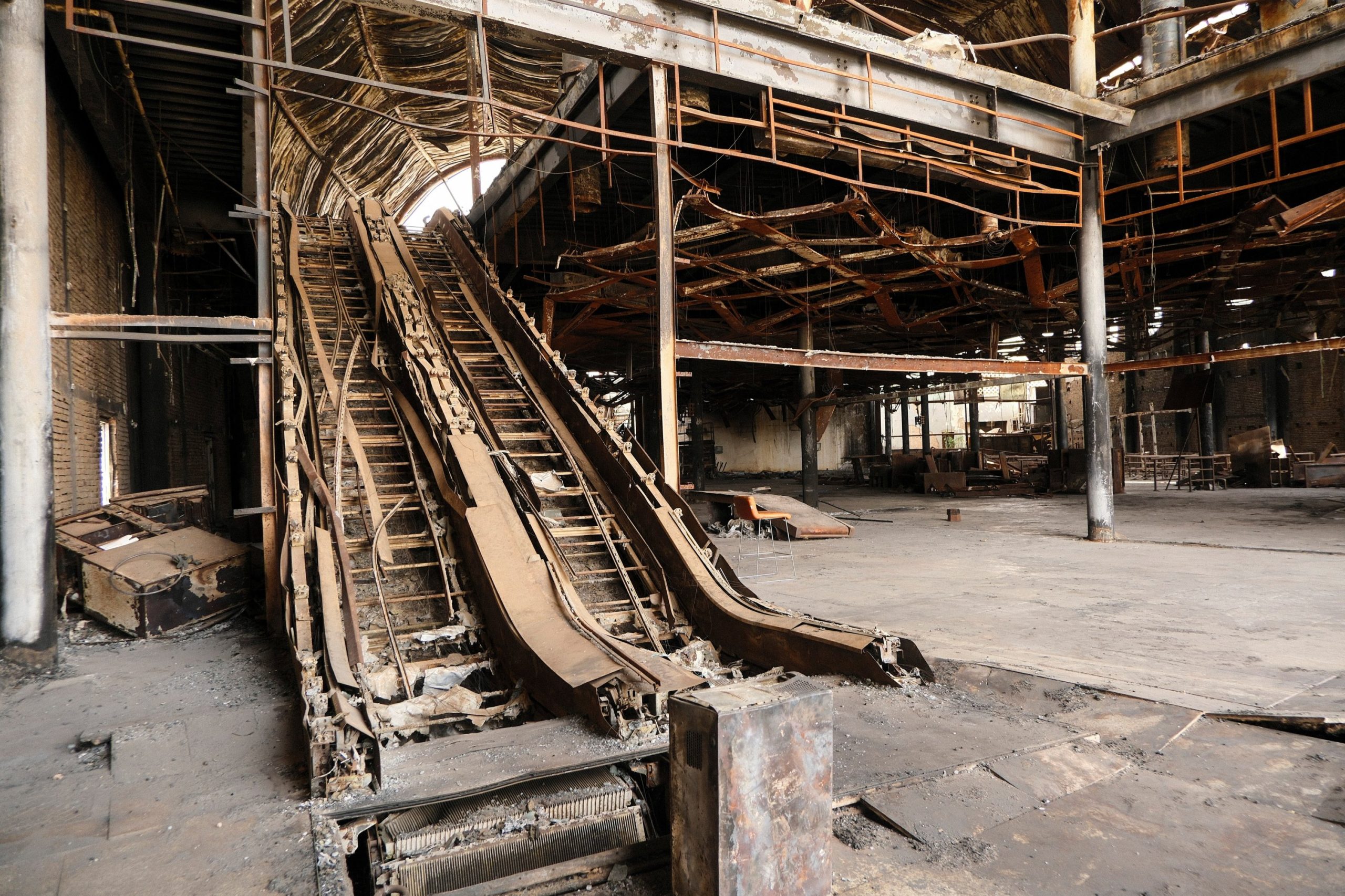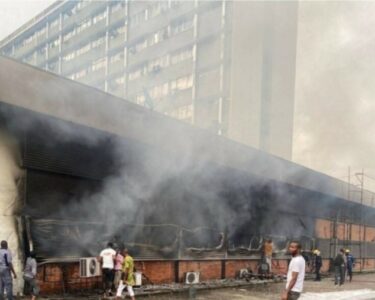Summary
Conflict since 2023 has shattered Sudan’s facilities
Hundreds of billions of dollars needed to rebuild
Little prospect of quick reconstruction as conflict drags
‘War has destroyed our country’, says Khartoum returnee
KHARTOUM, Sudan, May 28 (AfrikTimes) – Destroyed bridges, widespread blackouts, dry water stations, and looted hospitals across Sudan reveal the catastrophic toll two years of war have taken on the country’s infrastructure. Authorities estimate that reconstruction will require hundreds of billions of dollars, but ongoing conflict and continued drone strikes on power stations, dams, and fuel depots make any large-scale recovery efforts unlikely in the near term.
Compounding the challenge is a global decline in foreign aid, with the United States—previously Sudan’s largest donor—significantly cutting its assistance.
Since April 2023, the Sudanese army and the paramilitary Rapid Support Forces (RSF) have been locked in fierce combat. The fighting has claimed tens of thousands of lives, injured many more, and displaced approximately 13 million people, creating what aid organizations describe as the world’s worst humanitarian crisis.
Residents of the capital Khartoum have to endure weeks-long power outages, unclean water and overcrowded hospitals. Their airport is burnt out with shells of planes on the runway. Most of the main buildings in downtown Khartoum are charred and once-wealthy neighborhoods are ghost towns with destroyed cars and unexploded shells dotting the streets.
 A view of the Sudan Airways building, showing signs of shelling and fire damage, seen after the Sudanese army deepened its control over Khartoum from the Rapid Support Forces (RSF), in Khartoum, Sudan April 27, 2025.
A view of the Sudan Airways building, showing signs of shelling and fire damage, seen after the Sudanese army deepened its control over Khartoum from the Rapid Support Forces (RSF), in Khartoum, Sudan April 27, 2025.
“Khartoum is not habitable. The war has destroyed our life and our country, and we feel homeless even though the army is back in control,” said Tariq Ahmed, 56. He returned briefly to his looted home in the capital before leaving it again, after the army recently pushed the RSF out of Khartoum.
One consequence of the infrastructure breakdown can be seen in a rapid cholera outbreak that has claimed 172 deaths out of 2,729 cases over the past week alone mainly in Khartoum.
Other parts of central and western Sudan, including the Darfur region, are similarly ravaged by fighting, while the extensive damage in Khartoum, once the center of service provision, reverberates across the country.
Sudanese authorities estimate that rebuilding Khartoum alone will cost around $300 billion, while the rest of the country may require an additional $700 billion. The United Nations is currently conducting its own assessment.
Sudan’s oil production has plummeted to 24,000 barrels per day, less than half its pre-war output. The country’s refining capabilities are completely halted following the destruction of the al-Jaili oil refinery, which sustained $3 billion in damages, according to Oil and Energy Minister Mohieddine Naeem. With no domestic refining capacity, Sudan now exports its crude oil and imports fuel—while also struggling to maintain critical pipelines used by South Sudan.
Earlier this month, drone attacks struck fuel depots and the airport in Port Sudan, the country’s main port city. The Sudanese government blamed the United Arab Emirates, though the Gulf nation has denied any involvement.
 A view of damaged tanks in front of the Central Bank of Sudan building, after the Sudanese army deepened its control over Khartoum from the Rapid Support Forces (RSF), in Khartoum, Sudan April 27, 2025.
A view of damaged tanks in front of the Central Bank of Sudan building, after the Sudanese army deepened its control over Khartoum from the Rapid Support Forces (RSF), in Khartoum, Sudan April 27, 2025.
Naeem also confirmed that all of Khartoum’s power stations have been destroyed. The national electricity company recently announced plans to increase power imports from Egypt to support northern Sudan and admitted earlier this year that repeated drone attacks on stations outside the capital are straining the country’s electrical grid to a breaking point.
Following the recent retaking of Khartoum by government forces, residents returning to their homes have found scenes of widespread looting and destruction. One striking indicator of the devastation is the numerous deep holes dug into walls and roads in a frantic search for valuable copper wiring.
On Nile Street—formerly the busiest thoroughfare in the capital—a trench nearly one meter (three feet) deep and stretching over four kilometers (2.5 miles) now runs along the road. The copper wiring has been stripped, and signs of burning are visible throughout.
Khartoum’s two main water stations were rendered inoperable early in the conflict. According to Khartoum State spokesperson Altayeb Saadeddine, RSF forces looted essential machinery and used fuel oil from the facilities to power their vehicles.
Those who have remained in Khartoum are now forced to rely on water from the Nile or long-abandoned wells, significantly increasing the risk of waterborne diseases. However, few hospitals remain capable of providing treatment.
“There has been systematic sabotage by militias against hospitals. Most medical equipment has been looted, and what remains has been deliberately destroyed,” said Health Minister Haitham Mohamed Ibrahim, who estimated the total damage to Sudan’s healthcare system at $11 billion.
 A view of Shambat Bridge, which was destroyed, after the Sudanese army deepened its control over Khartoum from the Rapid Support Forces (RSF), in Omdurman, Sudan April 28, 2025.
A view of Shambat Bridge, which was destroyed, after the Sudanese army deepened its control over Khartoum from the Rapid Support Forces (RSF), in Omdurman, Sudan April 28, 2025.
With an estimated two to three million people expected to return to Khartoum, urgent intervention is needed to prevent further humanitarian disasters, such as the recent cholera outbreak, warned Luca Renda, the United Nations Development Programme (UNDP) Resident Representative.
Still, the ongoing war and a severely limited national budget have made large-scale reconstruction impossible for now.
“What we can do with the capacity currently on the ground is focus on small-scale infrastructure rehabilitation,” Renda said. This includes projects like solar-powered water pumps, hospitals, and schools.
He added that, in the long term, the war could present an opportunity to decentralize basic services away from Khartoum and to invest in greener, more sustainable energy solutions.
 A view of a burned building and the tail of a Sudan Airways aircraft amid debris at Khartoum Airport, after the Sudanese army deepened its control over Khartoum from the Rapid Support Forces (RSF), in Khartoum Sudan April 26, 2025.
A view of a burned building and the tail of a Sudan Airways aircraft amid debris at Khartoum Airport, after the Sudanese army deepened its control over Khartoum from the Rapid Support Forces (RSF), in Khartoum Sudan April 26, 2025.
—Additional reporting by Reuters’ Nafisa Eltahir







